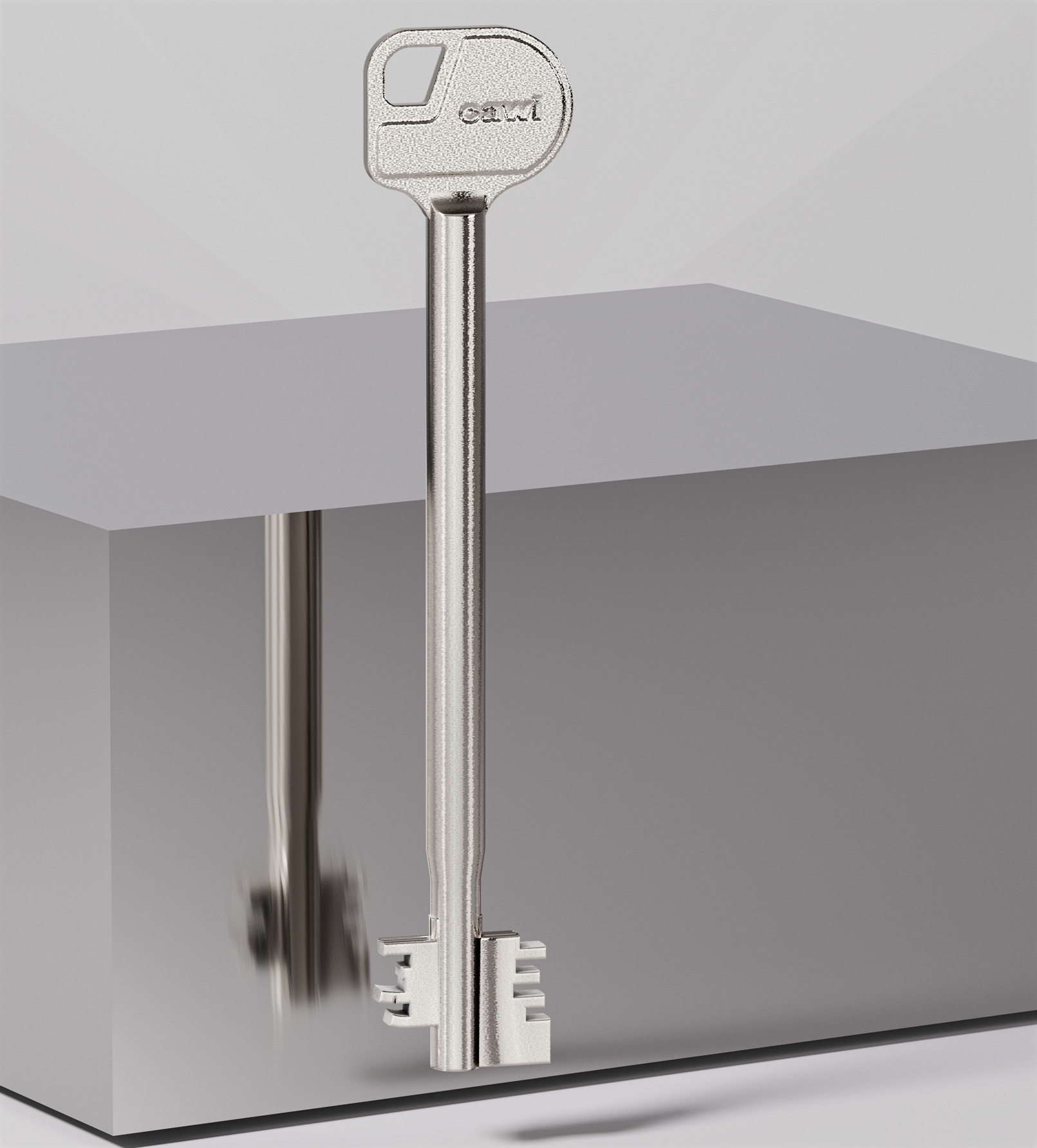Advantages
— relatively low purchase cost
— speed of unlocking
— reliability (if not damaged)
— possibility of copying (if you would like to do so)
Disadvantages
— the possibility of copying (if someone else would like to do so)
— relatively higher costs for creating duplicates
— prone to damage
— the need for physical security against misuse

Let’s take a look at the above
Key safe locks are, in their basic form, the cheapest option to keep intruders from unlocking.
Once you have the key in your hand, unlocking depends only on the speed with which you insert it and turn it by about 150 degrees.
In our safes, we use locks with key lengths of 120 mm (main door), 95 mm (drawer), 65 mm (inner boxes and other safes with basic security).
As a basic standard, safe key locks are supplied with two original keys. While not every supermarket will make duplicate keys, specialists will copy the key for you even without a coding card—they are not used with safe keys. The more skilled ones can do it without you bringing a lock. However, you must expect a higher price than for copies of conventional keys for cylinder locks. In 2023, the price of a copy of the simplest key is in the upper hundreds of crowns, and not infrequently it will even exceed one thousand crowns.
You should think about duplicating a key when you have only one perfect key left and you should not delay in making a duplicate.
If the key is lost—you cannot be 100 % sure that someone will not find it and use it to unlock your lock.
It is then a matter of consideration whether to invest in replacing the whole lock and thus eliminate the misuse of the lost key. There are locks that can deal with the loss of the key mechanically, but their purchase price is significantly higher.
How to take care of a key lock so that it lasts a long time and its security remains at the highest level possible?
To avoid unnecessary expenses, it is important to pay special attention to the key itself. Apart from losing it, you should prevent physical damage to it in particular. The teeth on the key are especially at risk of three states that can occur at different rates:
— bending
— cracking
— breakage
Even one bent tooth can make it impossible to unlock. Even in this situation, you should address the problem immediately—by making a copy from a second perfect key (if available).
If you decide to straighten the tooth—there is a risk that it will fracture or break off completely. In such a situation, a better option is perhaps if the tooth breaks outside the lock—you simply will not open with it. However, if the tooth breaks off inside the lock, this is just another complication, as the broken fragment can prevent subsequent unlocking even with a perfectly good key.
It’s a good idea to check the condition of the teeth from time to time, and definitely any time there is an impact (typically a fall on a hard floor).

The picture below will help you understand how to recognize a bent, cracked and broken tooth.
Tooth # 1 is bent
Tooth # 2 is cracked
Tooth # 3 is completely missing (you can tell by the counterpoint on the other side—where there is a “ditch” on one side—there must be an equally high “protrusion” on the other side)

You should also avoid leaving your safe keys unattended or lending them to untrustworthy people.
There are technologies available today that can make a key from a smartphone photo, and while this is more expensive than the standard procedure, we caution against sharing photos where keys could be captured.
If you’re not actively using one of the keys—it’s a good idea not to lock it in the safe it’s intended for. This is simply because if something happens to the main one, you won’t be able to get to the other one easily. It is therefore advisable to store such a key in a bank safe deposit box or at least in another safe—ideally in a completely different location. It may take a while to get to the other key, but it’s also not a good idea to hide it in your home next to the safe under a pot.
